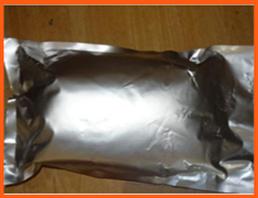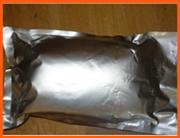Basic Information:
Product Name: Glimepiride
Synonyms: 1h-pyrrole-1-carboxamide,2,5-dihydro-3-ethyl-4-methyl-n-(2-(4-(((((4-methylcyc;glimepirid;hoe490;trans-lohexyl)amino)carbonyl)amino)sulfonyl)phenyl)ethyl)-2-oxo;GLIMEPIRIDE;1-[[p-[2-(3-ethyl-4-methyl-2-oxo-3-pyrroline-1-carboxamido)ethyl]phenyl]sulfonyl]-3-(trans-4-methylcyclohexyl)urea;amary;AMARYL
CAS: 93479-97-1
MF: C24H34N4O5S
MW: 490.62
MP: 212.2-214.5 °C
Storage temp. Room temp
Solubility DMSO: >10 mg/mL
Chemical Properties: White Cyrstalline Solid
Delivery: Within 24 Hours After Payment
Certificate: ISO 9001, USP,GMP
Payment: Western Union, MoneyGram, T/T, bitcoin
Shipping: EMS,HKEMS,EUB,ETK,FEDEX,DHL,UPS,Aramex,ETC
Usage1: anticonvulsant
Usage2: For concomitant use with insulin for the treatment of noninsulin-dependent (type 2) diabetes mellitus.
Usage3: A sulfonylurea hypoglycemic agent. Used as an antidiabetic.
Descriptions:
Glimepiride is used to treat high blood sugar levels caused by type 2 diabetes. It may be used alone, or in combination with insulin or another oral medicine such as metformin. In type 2 diabetes, insulin produced by the pancreas is not able to get sugar into the cells of the body where it can work properly. Using this medicine will help lower blood sugar when it is too high and help restore the way you use food to make energy. . Some people can control type 2 diabetes with diet alone or diet and exercise. Following a specially planned diet and exercising will always be important when you have diabetes, even when you are taking medicines. To work properly, the amount of glimepiride you take must be balanced against the amount and type of food you eat and the amount of exercise you do. If you change your diet, your exercise, or both, you will want to test your blood sugar to find out if it is too low.
Mechanism of action:
Main article: Sulfonylurea
Like all sulfonylureas, glimepiride acts as an insulin secretagogue.It lowers blood sugar by stimulating the release of insulin by pancreatic beta cells and by inducing increased activity of intracellular insulin receptors.
Not all secondary sufonylureas have the same risks of hypoglycemia. Glibenclamide (glyburide) is associated with an incidence of hypoglycemia of up to 20-30%, compared to as low as 2% to 4% with glimepiride. Glibenclamide also interferes with the normal homeostatic suppression of insulin secretion in reaction to hypoglycemia, whereas glimepiride does not. Also, glibenclamide diminishes glucagon secretion in reaction to hypoglycemia, whereas glimepiride does not.


 China
China

